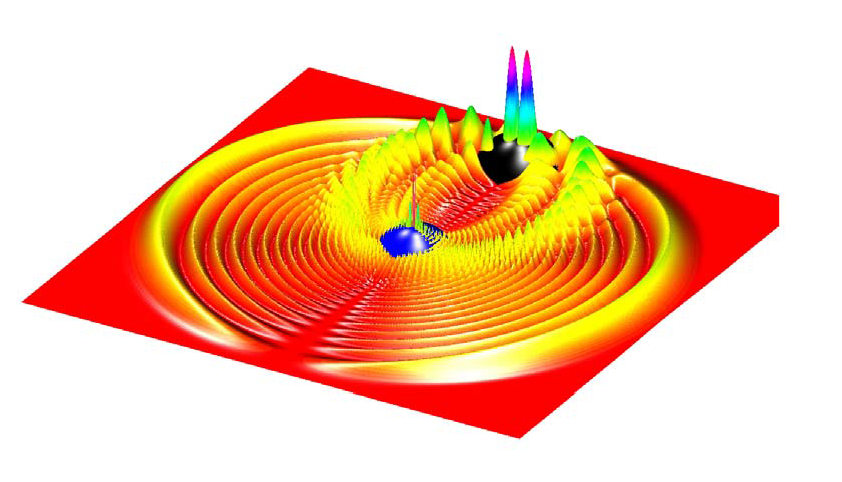Project 19: Polyatomic ultra-long range Rydberg molecules
Summary
The recent experimental discovery and characterization of ultra-long range diatomic molecules has unraveled their intriguing properties. In the present project we explore the electronic and rovibrational structure of polyatomic ultra-long range molecules and aim at controlling their properties with weak external electric and magnetic fields.
Methods for the computation of the electronic structure with a focus on three and four atom systems and for the determination of the rovibrational structure will be developed and extensively applied. The goal is hereby to extract effective rules or building principles explaining the molecular architecture of polyatomic ultra-long range molecules based on the properties of the underlying Rydberg wave function.
Our objective is to answer the questions how to change the molecular geometry from e.g. linear to planar configurations and how to tune molecular properties such as the electric dipole moment employing the external fields. A systematic study of the binding mechanisms with varying fields will be performed. This opens the possibility to perform molecular Rydberg quantum state engineering and create novel superposition states of different molecular configurations.
The analysis of the rovibrational structure will reveal the localization properties and the topological character of the vibrational configurations. The external fields will allow us to tune the adiabatic potential energy surfaces such that it has to be expected that their geometrical rearrangement will lead to the opening and closing of chemical reaction pathways and to the creation and annihilation of avoided and exact crossings of different potential energy surfaces. The latter includes conical intersections which are responsible for ultrafast decay processes. Our investigations will provide key results for the experimental preparation and detection of polyatomic ultra-long range molecules probing their spectacular properties and demonstrating their tunability with external fields.

People
Prof. Dr. Peter Schmelcher, Zentrum für optische Quantentechnologien, Universität Hamburg